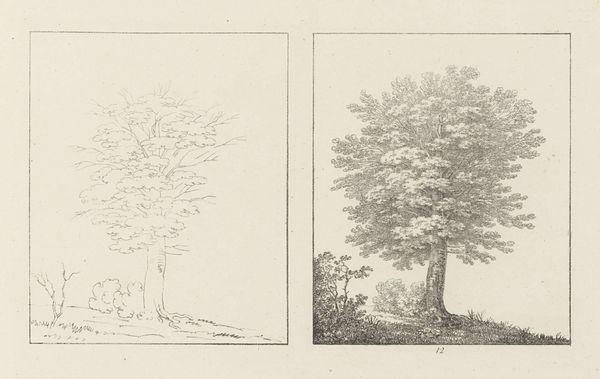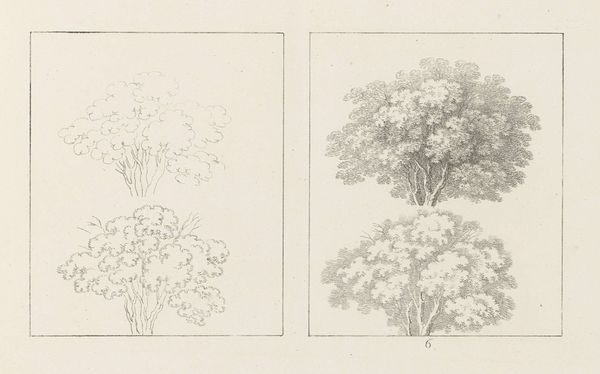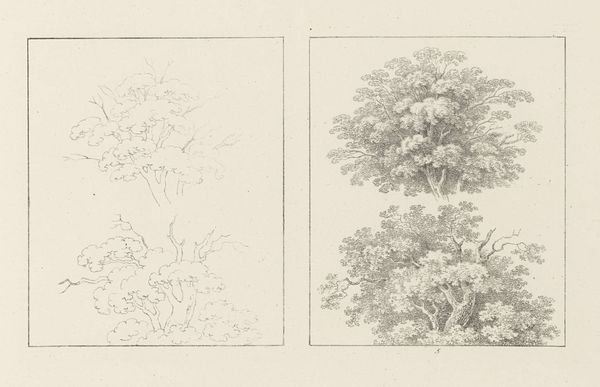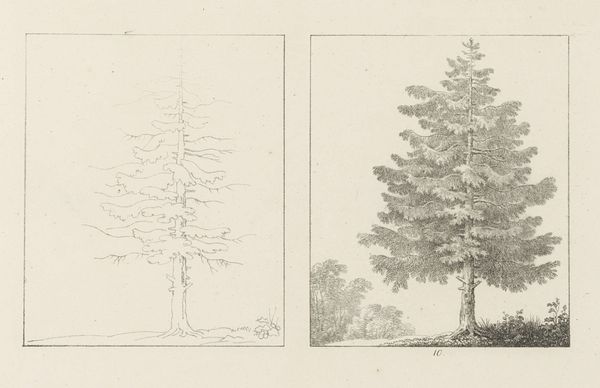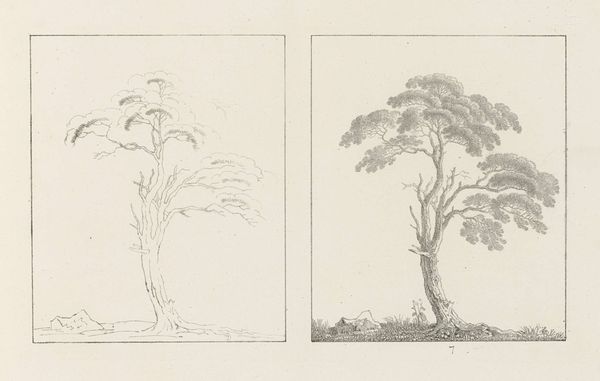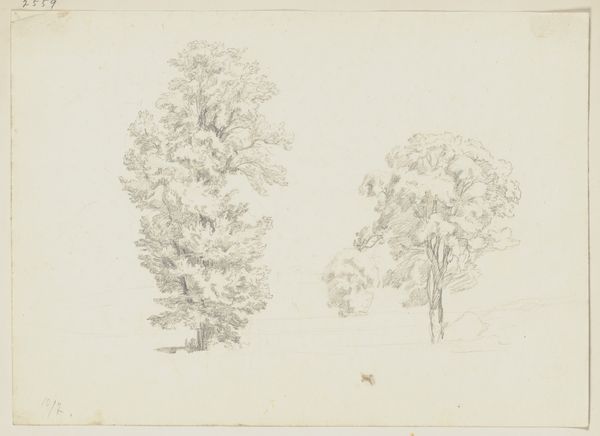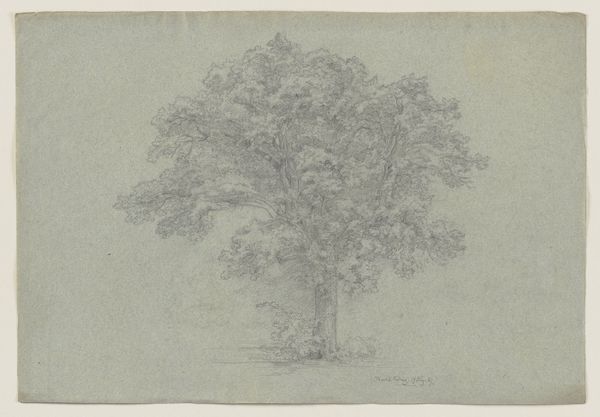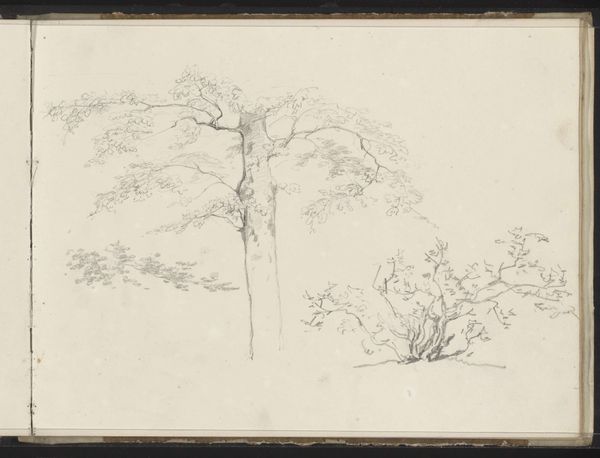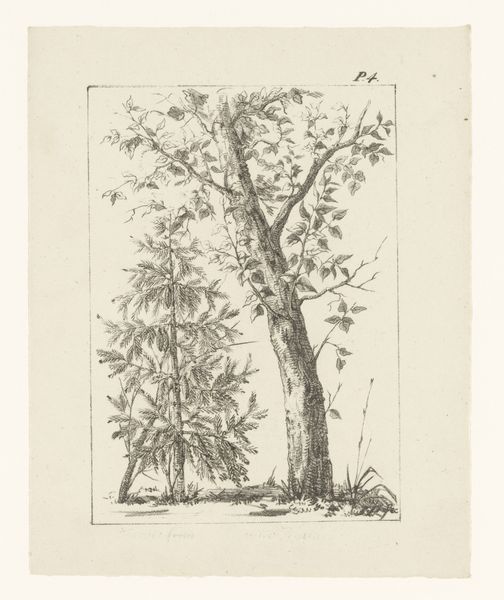
Albumblad met twee voorstellingen van van twee beukenbomen: links het ontwerp, rechts de uitvoering 1816
0:00
0:00
drawing, paper, pencil
#
drawing
#
pencil sketch
#
landscape
#
etching
#
paper
#
pencil
#
realism
Dimensions: height 317 mm, width 460 mm, height 205 mm, width 170 mm
Copyright: Rijks Museum: Open Domain
Curator: Before us is Max Josef Wagenbauer's "Albumblad met twee voorstellingen van van twee beukenbomen: links het ontwerp, rechts de uitvoering," dating back to 1816. It presents, side-by-side, a pencil sketch and a more finished rendering of beech trees. Editor: My eye is drawn to the study on the right. The intricate layering of pencil strokes achieves such density; it creates an almost velvety texture within the canopy. Curator: Indeed. The work offers a fascinating glimpse into Wagenbauer's process. Notice the contrast: the left side, raw and skeletal, emphasizing structure; the right side focusing on tonal value to capture light and form. The shift showcases the artist's intent in moving from idea to manifestation. Editor: Absolutely. It also gives us a privileged peek behind the scenes, allowing us to admire the artist's mastery of materials—his skill with a humble pencil to depict these mighty trees. You see the hand at work. There’s no mechanization here, it’s laborious in its way. Curator: A very astute observation. It's difficult to consider pencil drawing without addressing its integral place in artistic pedagogy and practice during that time. Sketching, after all, was central to comprehending form and training perception. Wagenbauer demonstrates acute sensitivity toward nature as mediated through established modes of representation. Editor: Agreed, though I think the pencil and paper themselves should take center stage as a tool of craft, transforming observed reality through manual dexterity. We might appreciate its intrinsic qualities by tracing production chains of graphite or the specific kinds of papers he used and how they responded. Curator: A relevant socio-historical investigation might be quite intriguing. In this case, however, I maintain it's fundamentally about exploring modes of representation, showing us how observed forms, are converted into meaningful structures within the picture plane itself. It seems clear to me there's an emphasis placed on conveying a structured perception over social conditions here. Editor: Perhaps. Yet, when I stand before this sheet of paper, I witness first and foremost labor—artisan and the earth each shaping one another, both grounded firmly within material reality itself. Curator: A beautiful point to conclude upon. Thanks to both interpretations, one formal, the other decidedly material, that help highlight nuances and meaning.
Comments
No comments
Be the first to comment and join the conversation on the ultimate creative platform.


